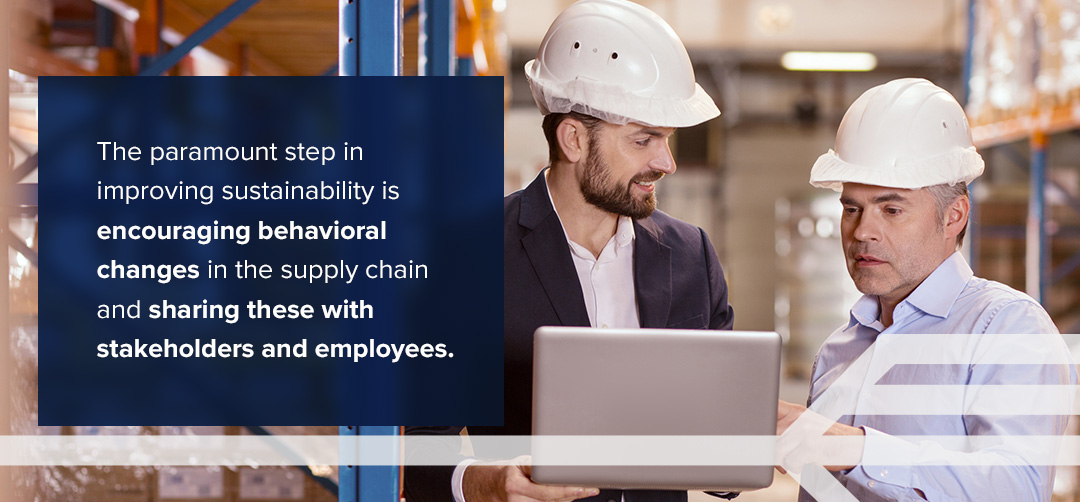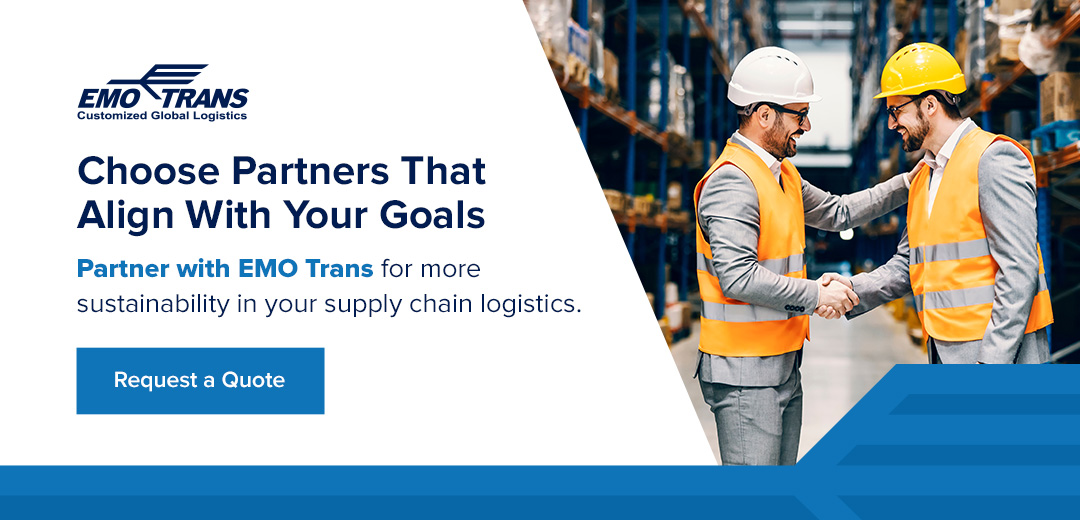
Improving supply chain sustainability is imperative in today’s rapidly evolving business landscape. As environmental concerns intensify, consumers are demanding eco-conscious products, and regulatory pressures are increasing to prompt more organizations to incorporate sustainable practices into their supply chain.
The five R’s of a sustainable supply chain guide organizations to reuse what they consume, refuse what they do not need, recycle what they cannot refuse, reduce what they use and rot the rest. By implementing these measures, companies gain a better reputation, reduce their environmental impact, mitigate risks and drive long-term success in an increasingly eco-aware society.
What Is Supply Chain Sustainability?
This initiative refers to an organization’s proactive steps to incorporate environmental considerations into business practices. Sustainability in the supply chain includes renewable production, sourcing, packaging and delivery by optimizing processes to minimize lower carbon emissions, cut back on waste and prioritize using green energy in manufacturing and supply.
The Importance of Supply Chain Sustainability
The two core elements of supply chain sustainability are environmental and social responsibility. Environmental responsibility focuses on mitigating potential harm from supply chain activities like production, storage and packaging. Social responsibility addresses the public’s principles, ethics, philanthropic expectations for your business and investor demands.
This initiative relies on reducing environmental impact while creating an opportunity for your supply chain to enjoy continuous improvement. Thanks to a circular economy and supply chain strategy, the sustainability project will continue growing long-term if you nurture it.
What Are the Benefits of Supply Chain Sustainability?
For most businesses, the typical supply chain is responsible for 90% of the effects on geological resources and about 80% of greenhouse gas emissions. When organizations increase their renewable energy sourcing by 20%, they help cut global emissions by a gigaton.
Benefits to your company include:
- Decreased energy overheads
- Improved investor relations
- A better reputation and corporate culture
- Compliance with the United Nations’ 2023 deadline to achieve Sustainable Development Goals

How Do You Improve Supply Chain Sustainability?
The paramount step in improving sustainability is encouraging behavioral changes in the supply chain and sharing these with stakeholders and employees. The best way to implement these changes is through capacity building and other training programs.
Sustainable supply chain best practices include:
- Green packaging
- Ethical sourcing
- Waste reduction
- A supplier code of conduct
- Sustainable transportation
- Reporting and transparency
Assessment and Transparency
Conduct a comprehensive assessment of the current supply chain and identify areas with potential for improvement. Calculate your organizational carbon footprint by multiplying the activity or consumption data by its corresponding emission factor. This exercise should highlight the pain points in your supply chain.
Supplier Collaboration
Partner with suppliers to ensure they also prioritize sustainability. This collaboration facilitates sharing innovative, eco-friendly solutions to drive efficiency improvements in transportation, manufacturing and packaging. Enforce these new standards by setting sustainability criteria for current and prospective suppliers, conducting regular audits and supporting stakeholders to improve their practices.
Engaging with suppliers builds trust and transparency. Offering resources encourages ethical labor practices and fair working conditions, creating a more resilient and responsible supply chain ecosystem. These small changes can add up to a more significant overall impact, creating the opportunity to set more ambitious goals following future assessments.
Efficient Resource Management
Efficiency is a pillar of achieving long-term sustainability goals. These efforts minimize water usage while reducing costs and lowering your overall environmental impact. Organizations can optimize resource use within the supply chain by aiming for less energy consumption, waste generation and water usage.
Conduct regular audits like calculating your greenhouse gas emissions to prioritize more efficient resource allocation. Implementing eco-friendly technologies and processes, like energy-efficient transport and packaging solutions, also fosters sustainability.
Here are some additional ways to manage resources more efficiently:
- Implement lean manufacturing practices.
- Find more efficient transportation routes.
- Embrace eco-friendly technology.
- Source materials locally.
- Use renewable resources where possible.
Diversification and Resilience
Reduce supply chain risks by diversifying suppliers and sourcing materials locally wherever possible. Sourcing closer to home reduces carbon emissions from long-distance transportation. Develop contingency plans for disruptions to maintain operational continuity. Like an adaptive capacity, these resilience strategies boost your organization’s ability to withstand unforeseen challenges and foster sustainability by preventing resource depletion and waste generation during sudden changes. Diversification also promotes healthy competition among suppliers, encouraging more sustainability improvements in their operations.
Life Cycle Assessment
Consider your business’ entire product life cycle, from design to end-of-life disposal. This assessment can identify areas with room for sustainable improvement, reducing resource consumption, waste and emissions. Using the data from a life cycle assessment can empower you to make more eco-conscious choices in product design, material sourcing and the manufacturing process.
When companies optimize these facets for sustainability, they can meet regulatory requirements, lessen their environmental footprint and appeal to environmentally conscious consumers or investors. Enhance the eco-friendly supply chain while improving your brand’s competitive advantage and public reputation.
Choose Partners That Align With Your Goals
Sustainability is fast becoming a necessity for businesses. By proactively incorporating sustainable practices into the supply chain, organizations leave a positive impact on the environment and affirm their good standing with the public. Partner with a supply chain and logistics partner that understands and incorporates sustainability into their business practices.
EMO Trans sources 30% of our electricity from renewable sources. We are actively addressing our Scope One and Two greenhouse gas emissions, and are ready to reduce Scope Three emissions by 20% in the next few years. Partner with EMO Trans for more sustainability in your supply chain logistics. We work with you to reduce fuel consumption and embrace renewable energy sources. Connect with us today for a quote.

